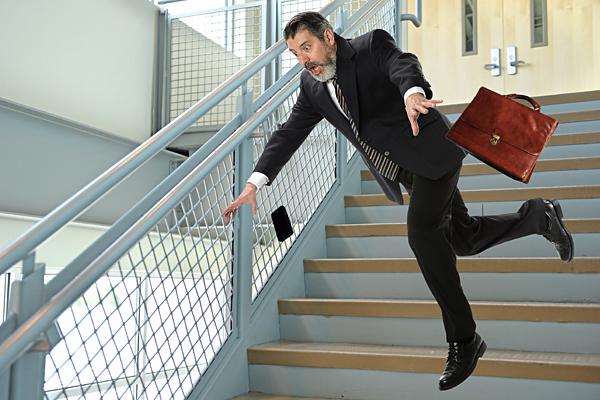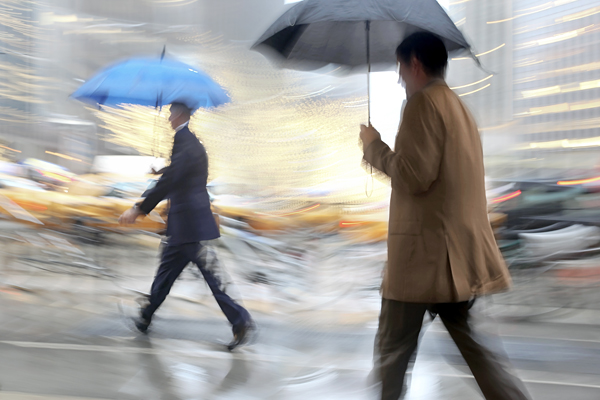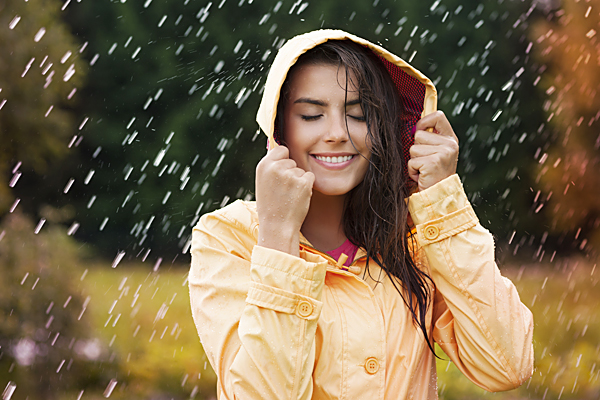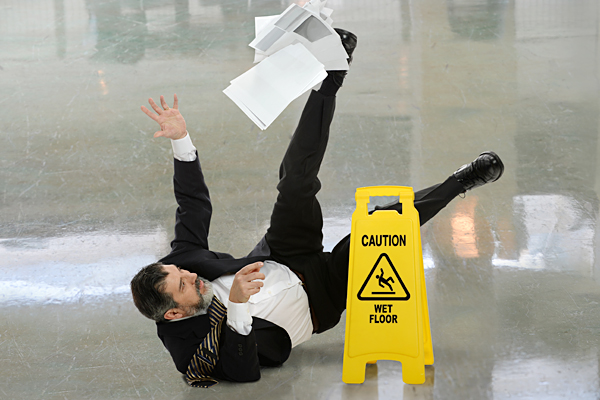Campus Health and Safety
Prevention of Slip and Trip Accidents
This article aims to review the common factors contributing to slip and trip, and present some practical tips on how people can prevent such accidents.
Slip and trip were the major causes of accidents in HKUST. Such accidents accounted for about 20% of all accidents in 2016. In any “slip and trip” accident, there are a number of contributing factors, and they can be broadly grouped under the following aspects:
- condition of walking surfaces (ground or floor surfaces),
- shoes and footwear, and
- personal factors.
While it is important to ensure that the walking surface meets the required safety standards, slip and trip accidents could not be effectively prevented without addressing the other factors.



Condition of Walking Surface
This is unquestionably a major contributing factor for slip and trip accidents.
-
Flooring materials within different areas of a facility are an important factor in preventing slip and fall accidents. The “coefficient of friction” or slip resistant rating is an important consideration in choosing the appropriate flooring materials for providing the necessary traction characteristics that help prevent slipping.
-
Property owners and facility management people have the responsibility to ensure that the flooring materials at different areas are of the right types for preventing slipping accidents. Enhancement works should also be applied when necessary.
-
Proper maintenance and housekeeping are necessary to ensure that the original safety condition would not deteriorate. The slip resistance of walking surface would inevitably be reduced when it is wet or contaminated by oil and grease.
-
Floors should not be waxed, polished or treated in such a way that would reduce the slip resistance beyond the required level.
-
Safety measures should be in place for floor cleaning operations, including proper barricades and warning signs.
-
Arrangements should also be in place to dry up wet floors (for spills and drips from wet shoes and umbrellas in rainy days) in a timely manner.
Footwear
Traction is measured between two surfaces acting upon each other. Shoes and footwear people choose to wear would be the other surface acting on the walking surface. So this is another important aspect we need to pay attention to prevent slip and fall accidents, and this is also something that every individual has control (and should assume responsibility) for protecting themselves.
-
Not all shoes are made equal. Different types of shoes would offer different levels of support and traction, including the materials forming the soles of the shoes, the design, fitness, etc.
-
High heels and platform shoes usually provide less stability and grip than sports shoes or shoes with lower heels.
-
Shoes with leather soles would provide much less traction than rubber soles, especially in wet conditions.
-
Flip-flops, slippers and other loosely fitted footwear would also increase the risk of slip and fall.
-
In more adverse conditions, such as in rainy and humid days when most walking surfaces are wet, the type of footwear people wearing would become much more critical for protecting people from slip and fall accidents.

Personal Factors

Pedestrians certainly have a role to play in protecting themselves from slip and trip accidents. There are many things people can/should do in this aspect.
-
Wear proper footwear at work and when traveling in public areas. Wear sturdy footwear that can provide sufficient traction and stability instead of flip-flops or slippers.
-
Pay attention to the floor/ground conditions and the surrounding when walking. Nowadays, many people are watching their handheld devices instead of their way while walking. Many things on our path may cause us to stumble if we are not paying enough attention.
-
Watch out for things along your path that may pose risks of slip and trip. Debris (e.g. paper stuff), fallen leaves, water, oil, grease, etc., can greatly reduce the traction of an otherwise non-slip walking surface. Obstacles, cracks, depressions, unevenness of ground, etc., are potential tripping hazards.
-
We also need to watch out for things like manhole covers, tactile paving (for the visually impaired), etc., in some areas. These things may present some risks due to the difference in traction (and levels) with the surrounding ground.
-
In rainy or extreme humid days when walking on wet ground is unavoidable, we have to be extremely cautious and mindful when walking. Traction on the ground would inevitably be reduced and we need to adjust our stride (a smaller stride) and pace so that we can maintain a good balance. Running or moving in a fast pace must be avoided.
-
Shoes that may survive in good weather condition could become slippery in rainy days, such as shoes with leather soles, high heels or platform shoes. You may need to choose special footwear that is more suitable for wet weather conditions.
-
We can also help keeping walking surfaces dry and clean by not causing spills on the floor. Immediately clean up spills (or seek help from service people), or warn others by putting up appropriate barricade and signs.
-
Avoid bringing water into indoor dry areas in rainy days, such as drying our shoes, wet umbrellas, etc., properly before going indoors.
